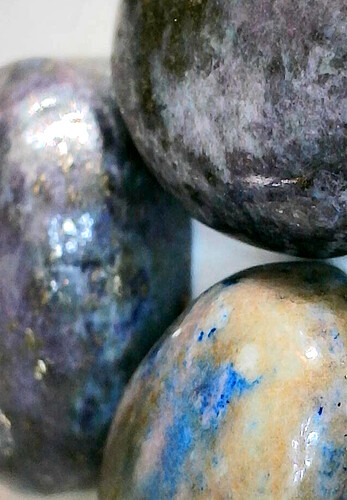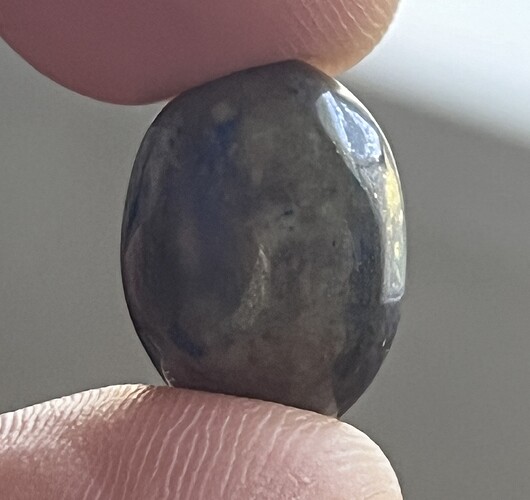Thank you, this is super helpful, and I appreciate the guidance on hardness, I am admittedly a hack but that’s something I need to learn.
Re. treatment, it is impossible to know, they were processed thousands of years ago, I got them in Sumatra from a very (very) local source, someone who finds them himself as-is locally, so all I can really say is that whatever the technique, it didn’t involve electricity. That is not to say they are originally from Sumatra, this was South Sumatra (Palembang), which was once a hub for the gemstone trade, and I also got a bunch of stones from Burma, New Guinea, and Thailand from him (among other locations, so who knows the origin origin. He had hundreds of “Millefiori” glass beads where are said to have been originally Roman or Italian, but he insisted they were made in Sumatra, which is possible; I have no reason to doubt him, but that would have pre-dated the Italian invention of that technique buy at least a millennium, which again, is possible. There is a lot of worked Tektite glass from northern Thailand that can be found all over the place, dating back thousands of years. Interesting side note: a big astroid hit that region ~81,000 years ago, a growing group of researchers believe it triggered the Toga eruption which, when the dust settled (literally and figuratively) wiped out 80+% of the megafauna as far away as Australia). So bottom line, that was a bang big enough to produce a lot of tektite. I consider for a moment that the second group could be tektite but It doesn’t measure or look remotely like tektite. Northern Thailand, Burma and Laos had invreadible metallurgy since at least 3800BC, so between the great stone work and metalwork, they may have originally come from that region.
Chrysoprase seems pretty possible for the second group, i’ll dig into that. This may be way off, but I have some very dark rubies that are shaped the same way (there are some very subtle “tells” that suggest they were worked the same way), and I wonder if these may be some kind of Beryl, they really “feel” similar, but the fractures don’t look that way (the inclusions do, though).
The first group is a head scratcher. He had a lot of those, and so they must have been prized, but it is very possible they were prized in the Oceanic world, a lot of gemstones are endemic to that region, especially Sumatra and New Guinea, and don’t seem to have been traded broadly. I have some stones from New Guinea (purchased there) which as known to only exist in New Guinea, but they measure and look exactly like Larimar, I can’t find any differences, so again, who knows.
One thing I forgot to mention is the first group is fluorescent under UV. This sounds strange, but the surfaces almost look pigmented, and if that were true, ancient pigments were regular organically-based (made with certain types of bacteria - it’s what made petroglyph pigments last so long, and it’s impossible to wash/scrape off - the pigments outlast the stone), so one very wild idea is that they are somehow pigmented. Again, just a wild guess, but it would explain why their surfaces are thoroughly opaque.
Anyhow, thanks again for the feedback, super helpful.








